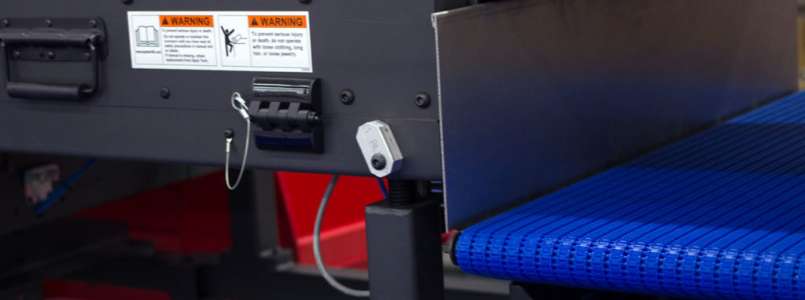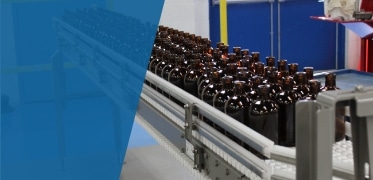1. Do Keep Hair, Body Parts & Clothing Clear of the Conveyor
Whether it’s long hair, body parts or loose clothing, anything that is not properly restrained can get caught in a conveyor belt, potentially causing serious injuries. One of the key conveyor safety rules you should implement is that anyone working near a conveyor should make sure their hair is tied back and jewelry, like rings, necklaces, watches and bracelets, should be removed. Also, employees working near conveyors should watch their appendages and avoid wearing baggy clothing.
2. Don’t Climb or Stand on the Conveyor at Any Time
Workers should never stand, sit, climb or walk on the conveyor belt. Safety is of the utmost importance, and these actions are extremely dangerous (even if they look fun). Conveyor belts were not designed for people to walk or climb on them. There are many pinch points in any conveyor system that can catch people or clothing, risking serious injuries — even when conveyor pinch point guards have been installed. Besides the risk of injury, people riding on conveyors can cause the belts to un-track, damaging the whole system.
3. Do Keep Personnel Away From the Conveyor Before Starting
Government regulations require conveyor systems to be equipped with a warning signal that can be sounded prior to start-up. That should be just the beginning for companies that are establishing conveyor safety rules out of concern for their workers. Employees should be trained on what the warning signal means and the possible dangers that can occur if it is ignored.
4. Don’t Take Off Conveyor Guards or Move Safety Divides
Employees or contractors can remove guards for maintenance, exposing machinery, chains, gears and moving parts that can be dangerous. To keep workers safe, make sure automated conveyor systems are locked when in service and only return to operating equipment after all conveyor pinch point guards and covers have been successfully reinstalled.

5. Do Know Where the Stop/Start Controls Are and How to Use Them
Any employees who work with conveyor belts should be aware of where to find the emergency stop and start controls for the system. That way, in the event of any emergencies or other problems, employees will be prepared to handle the situation appropriately.
6. Don’t Ignore Issues
Employees who work on automated conveyor systems should know that if there are any issues, they should notify a supervisor immediately. Employees should be trained that if you see something, say something. No matter how minor the issue may seem, it’s always better to be safe than sorry.
7. Do Make Conveyor Belt Safety Training a Priority
If your business involves conveyors, all employees should be well-versed in the safe use of conveyor belts before they start working. In addition, existing employees should receive regular refresher training on conveyor safety rules, and all visitors should be made aware of how to stay safe while they are in your facility.
8. Don’t Mistreat Controls
Only trained employees should use conveyor controls. It’s important that you regularly monitor your conveyor controls to make sure no one has misused, modified or disconnected them. Train your employees to understand that the conveyor belt controls are not to be modified without authorization and they are part of a larger system.
Choose Span Tech For Your Automated Conveyor Systems
Now that you’ve learned some important tips about safe conveyor system usage, Span Tech can help you build your conveyor belt system or keep your current system running smoothly. Whether your business is pharmaceuticals, manufacturing, food production, beverage production or a variety of other industries, Span Tech works every day to create the best conveyor belts we can. If you have questions about Span Tech’s products or proper conveyor belt safety, contact our team of experts today for assistance.











